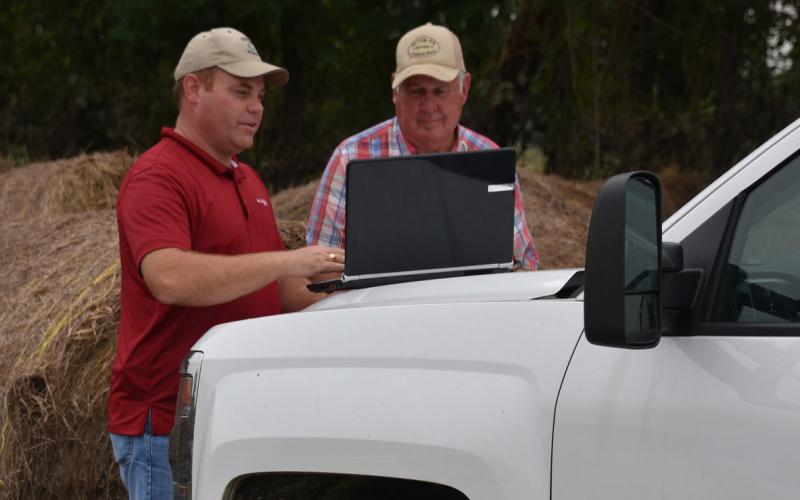Sales and transport is a stressful time for any animal. Reducing stress factors due to transitions start before the actual purchase of your new project. Managing proper nutrition and disease management are just a couple factors to help your project get off to a great start.
Choosing Feed
There are many different brands of goat feed. Work with your local feed dealer or nutritionist when developing a feed ration for your goat kids. I recommend picking out a brand of feed that you are going to stick with throughout the growing season. Changing feed types and brands will only add stress to your goat. Keep in mind goats are very susceptible to coccidiosis, a parasitic intestinal disease, when stressed. Using a feed that contains a coccidiostat will help prevent coccidiosis outbreaks. Many goat starter/show feeds contain coccidiostats, which will be indicated on the feed label along with the term “medicated”.
Find out what kind of feed they were on before you bought them. If possible purchase a bag of that feed so you can transition your goat kid’s diet over a period of days. Slowly get your goat to full feed by feeding 2-3 times a day. Goats tend to sort texturized feeds so a mini pellet is the best option to make sure they are consuming a balanced diet. Because goats put on fat from the inside out (this is opposite of lambs) goats can stay on a starter feed program until they are 70-80 lbs.
Don’t forget goats are ruminants! Ruminant animals have four compartments to their digestive system and traditionally are grazing animals. They need roughage, so select a high quality grass or grass/alfalfa mix. Small amounts of hay (I recommend two handfuls of hay per goat per day) will fuel the intake of a pelleted diet. Feeding too much hay will result in a hay belly, so decide as a family what a handful should look like. Consistency is key and can be challenging with busy schedules, but decide how many times a day you are going to feed, what times and stick with it. This routine will reduce stress and is less likely to cause digestive upset. I also recommend adding a feed scale to the feed room. Everyone’s scoops of feed vary in weight. Learning how to be a good “feeder” is essential to your project.
Disease and Pest Defense
Goat kids should have their initial CD-T shot and a booster before you bring them home. This will help prevent against enterotoxemia (overeating disease) caused by Clostridium Perfringins types C and D and tetanus. If you notice your goats scratching themselves with their hooves or having a rough looking hair coat, they probably have lice. Lice are external parasites which spend their entire lives on the sheep or goat. Both immature and adult stages suck the blood or feed on the skin. Goat lice are host specific and only attach to goats and their close relatives such as sheep. Using a pour-on will help with this problem. Be sure to follow product labels to give the correct dosage. Mites have also been seen here in the northern region, which can cause varying degrees of dermatitis. Apply approved product and re-apply in 10 days. All youth who are exhibiting animals should work to develop a strong Vet-Client-Patient Relationship. Learn from the producer what vaccine protocol has been implemented so that you can build upon that record with the help of your local veterinarian.
Facility Considerations
Everyone’s situation and facilities are different, so careful planning also can help. When setting up the goat kids’ pen, here are a few things to consider:
- Feeders: Choose feeders or bunks that the goats can’t lay in or play in, wasting high priced feed isn’t very economical. Clean the fines and dust from your feeders regularly.
- Water Source: Clean it regularly. Goats love clean, fresh water and will often turn up their noses and refuse to drink if it has been stepped in or has waste/feces in it. During the first couple days in their new environment consider using an electrolyte in the water.
- Mineral and Salt: Consult your nutritionist for the right choice in mineral and salt. Select a feeder that keeps the mineral and salt clean.
- Clean, Dry Pens: Keep the pen clean and dry, this will reduce sickness and disease. Weather temps in the Midwest can vary during April-June, so provide a barn area or shed where the goats can get out of the elements. If your purchased goat was clipped tight, make sure to keep it in a warm location until its hair grows back.
- Watch Them: Take time to watch your goats every day. Sickness is not always obvious, and goats tend to hide it well. Unfortunately, when it is obvious- they are really sick, and saving them gets that much harder.
- Think like a goat: Look around, and last of all sit down in their pen. Are there any potentially dangerous things that need to be fixed? Goats are curious creatures, if a goat can get its head through the fence, there is probably room for its whole body to escape!


